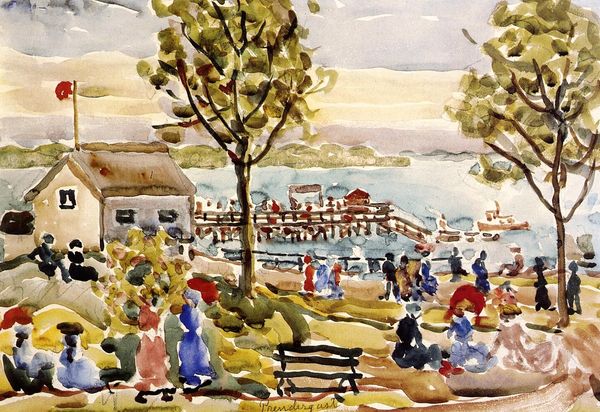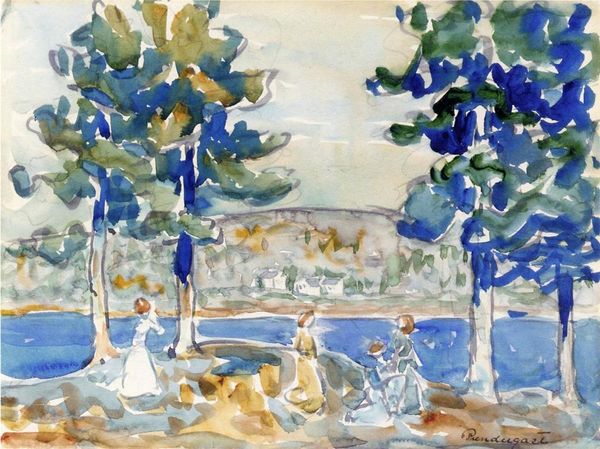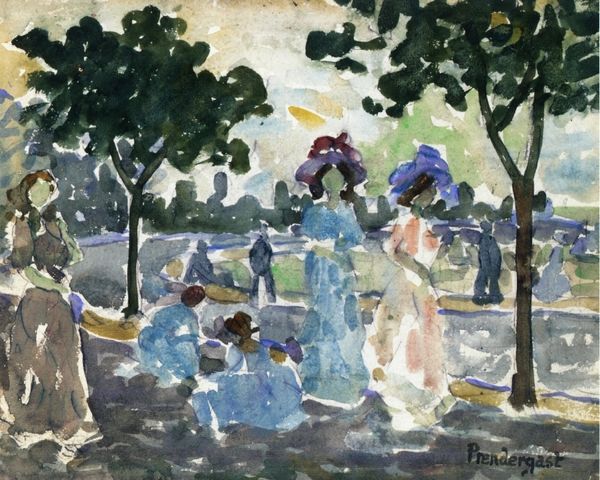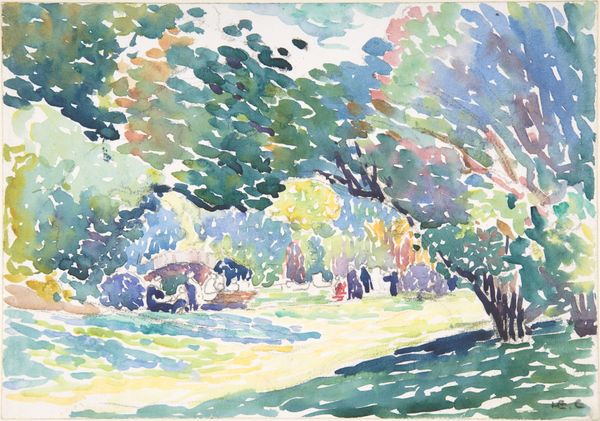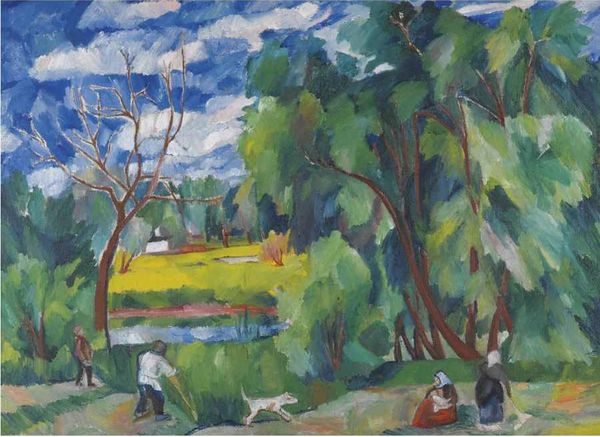
Dimensions: 34.93 x 50.48 cm
Copyright: Public domain
Editor: Here we have Maurice Prendergast's "Park, Gloucester" created in 1923. It appears to be watercolor and possibly some oil on paper, depicting figures in a park setting. It has a carefree, breezy feel about it, with light washes of color that blend together almost like a memory. What jumps out at you when you look at this piece? Curator: What I find immediately striking is how Prendergast uses this almost playful, decorative style to portray leisure in a public space. “Park, Gloucester,” like much of his work, showcases an interest in portraying modern life. Now, considering that, what might this artwork suggest about the social landscape of the 1920s, particularly in a place like Gloucester? Editor: Hmmm, I see how he captures this sort of carefree socializing in a public park. I suppose this imagery could subtly point to the democratization of leisure, maybe the park as a place where different social classes could mingle, at least visually in Prendergast's rendering. Was there a political undertone to depicting such scenes at that time? Curator: Potentially. While Prendergast wasn’t overtly political, his choice of subject matter – everyday people enjoying public spaces – can be viewed in the context of the growing urban middle class and their access to leisure. Furthermore, his distinct style, moving away from academic painting, signaled a shift in artistic values mirroring societal changes. Do you see any elements that challenge traditional artistic conventions? Editor: Well, the lack of defined lines and the emphasis on capturing the overall impression rather than precise details certainly seem to depart from older traditions. I also wonder, who were the consumers of Prendergast's work? How did their social position influence his subject matter and artistic approach? Curator: Good questions. Prendergast’s patrons were often part of this emerging, relatively liberal middle class, eager to embrace modern art that reflected their own changing world. He provides insight to how cultural shifts impact artistic tastes and what it visually acceptable at a certain moment. Editor: It’s interesting how the artwork mirrors these societal changes. I never thought about it in terms of the democratization of art itself. Curator: Precisely, and that’s why context is vital to understanding not only the image itself, but the broader forces at play.
Comments
No comments
Be the first to comment and join the conversation on the ultimate creative platform.

